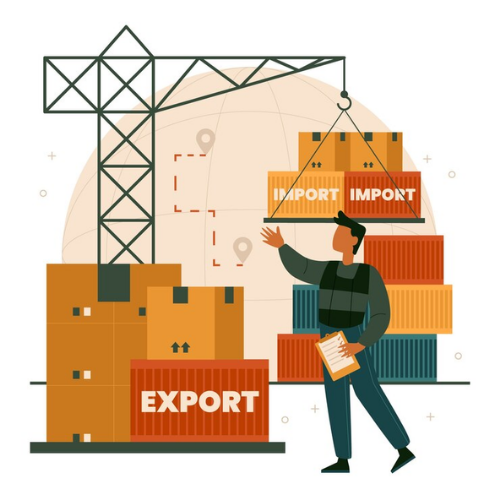Impact of Technology on GST Cancellation and Revocation Processes
Discover how technology is transforming the GST cancellation and revocation processes, improving efficiency and accuracy. Learn about the impact of digital tools and automation on streamlining these important tax procedures.
Impact of Technology on GST Cancellation and Revocation Processes
In the world of taxation, technology is playing an increasingly important role in transforming traditional processes. One area where this transformation is particularly evident is in the Goods and Services Tax (GST) cancellation and revocation processes. As digital tools and automation become more prevalent, tax authorities are leveraging these technologies to improve efficiency and accuracy in these critical procedures.
GST Cancellation and Revocation Processes
GST cancellation and revocation are essential processes that allow businesses to update their registration status with the tax authorities. Cancellation occurs when a business ceases its operations or is no longer required to be registered under the GST regime. On the other hand, revocation is the process through which a business can reinstate its GST registration after it has been cancelled.
These processes are crucial for maintaining tax compliance and ensuring that businesses meet their obligations under the GST law. However, the manual nature of traditional cancellation and revocation processes can be time-consuming and prone to errors. This is where technology comes in to streamline and enhance these procedures.
Technology Impact on GST Cancellation and Revocation
The impact of technology on GST cancellation and revocation processes is multifaceted. One of the key benefits of technology in this context is the automation of repetitive tasks. Digital tools can help tax authorities automate data entry, validation, and processing, reducing the time and effort required to complete these processes.
Automation also improves accuracy by minimizing the risk of human error. By leveraging technology, tax authorities can ensure that GST cancellation and revocation requests are processed correctly and in compliance with the relevant regulations, reducing the likelihood of costly mistakes.
Additionally, technology enables tax authorities to enhance their monitoring and enforcement capabilities. Digital tools can provide real-time insights into GST registration status and compliance, allowing tax authorities to identify potential issues and take timely action to address them.
Digital Tools and Automation in GST Processes
Several digital tools and automation technologies are being used to modernize GST cancellation and revocation processes. These include:
1. Online Portals:
Many tax authorities now offer online portals where businesses can submit GST cancellation and revocation requests. These portals streamline the process by providing a centralized platform for submitting documentation and communicating with tax authorities.
2. Electronic Verification:
Electronic verification tools allow tax authorities to validate the authenticity of documents submitted by businesses as part of the cancellation or revocation process. This helps prevent fraud and ensures the integrity of the tax system.
3. Workflow Automation:
Workflow automation solutions help tax authorities automate the processing of GST cancellation and revocation requests. These tools can route requests to the appropriate personnel for review, track progress, and generate notifications to keep stakeholders informed throughout the process.
4. Data Analytics:
Data analytics tools enable tax authorities to analyze trends and patterns in GST cancellation and revocation requests. By leveraging data insights, tax authorities can identify areas for improvement and optimize their processes to enhance efficiency and compliance.
Benefits of Technology in Tax Procedures
The integration of technology into GST cancellation and revocation processes offers several benefits for businesses and tax authorities alike. Some of the key advantages include:
1. Enhanced Efficiency:
Technology streamlines the processing of GST cancellation and revocation requests, reducing the time and resources required to complete these procedures. This allows businesses to update their registration status swiftly and tax authorities to focus on higher-value activities.
2. Improved Accuracy:
Automation minimizes the risk of errors in GST cancellation and revocation processes, ensuring that requests are processed correctly and in compliance with regulatory requirements. This promotes trust in the tax system and facilitates smoother operations for businesses.
3. Greater Compliance:
By enhancing monitoring and enforcement capabilities, technology helps tax authorities promote compliance with GST regulations. Real-time insights into registration status and compliance enable authorities to address non-compliance promptly and effectively.
4. Cost Savings:
Efficiencies gained through technology can result in cost savings for both businesses and tax authorities. By streamlining processes and reducing manual intervention, technology helps minimize administrative expenses and improve overall financial performance.
Technology is revolutionizing the way tax authorities handle GST cancellation and revocation processes. By leveraging digital tools and automation, tax authorities can improve efficiency, accuracy, and compliance in these essential tax procedures. Businesses stand to benefit from faster processing times, reduced errors, and better transparency in their interactions with tax authorities. As technology continues to advance, the impact on GST processes is expected to be even more profound, paving the way for a more efficient and effective tax system.
Latest Updates
ca4filings.com Services




























-registration.png)



